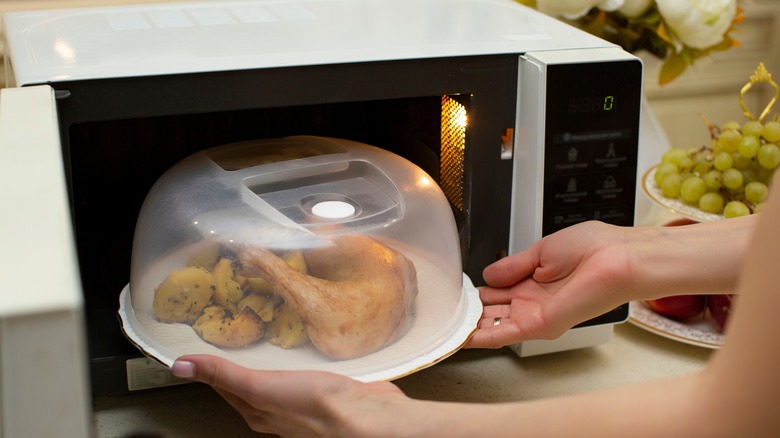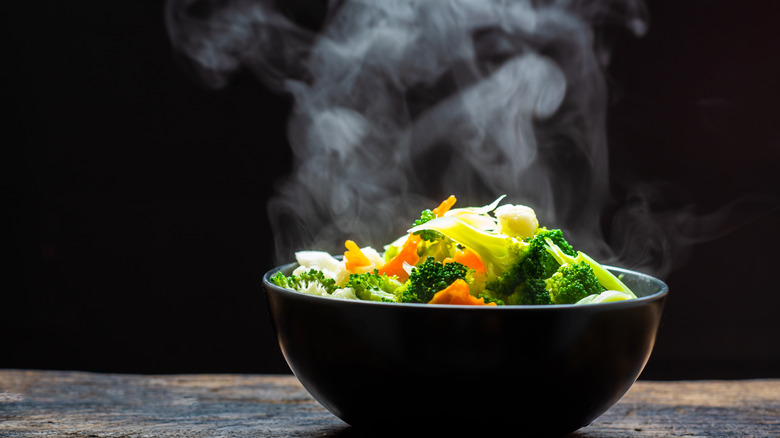Why You Should Always Cover Food In The Microwave
We all hate opening the microwave to find a splattered mess clinging to corners and crevices. If only Uncle Joe or little Sally had remembered to cover that platter of pasta or bubbling bowl of soup. And let's not even think about eggs, which explode within seconds when hit with microwaves, the mystery of which we'll leave to experts, such as Live Science. The point is that microwaving food is a learned art, a coordinated dance among temperatures, food consistency, boiling points, and food thickness. But there's one very simple thing that applies to almost anything you heat or cook in a microwave oven: the covering.
Yes, you should always cover food in the microwave, according to multiple culinary professionals, including Rachell Williams from the Food Safety Information Council, who discussed the subject with the HuffPost. Before delving into the yes-and-no's of microwaving cooking, she explained how microwave ovens work compared to standard options. While stovetops supply direct heat to a pan, ovens heat the air surrounding the vessel holding the food. Microwaves instead reach all the way through any container and generate heat by "exciting" molecules inside the food. That affects different foods in different ways, including the tendency to splatter or explode.
As interesting as that may be on a food-trivia level, the potential of food explosions is only one of several valid reasons to cover your food before closing that microwave door.
Cover material matters
The havoc caused from uncovered food inside a microwave goes far beyond the mess it leaves. Failing to cover what you're cooking or reheating affects the consistency and heat distribution of the food, potentially leading to unwanted results, explains Today. Because heat circulates inside the oven, lightly covering the plate or container helps the food heat more evenly without overcooking. It also creates a moist heat that steams the food, which can kill harmful food bacteria. However, it's crucial that the covering be loosely fitted to avoid liquid explosions and lids that melt onto the container.
Depending on the type of covering, more benefits or precautions come into play, according to GE Appliances. Paper towels, loosely applied, let any excess steam escape and are easy to throw away afterward. But look for microwavable paper towels, as some versions may contain nylon or metals that could ignite when heated.
Jane Goodwin from the USDA's Food Safety Inspection Service cautions Today's audience against using takeout containers or plastic wrap in the microwave because they could melt, causing harmful chemicals to infuse the food. A plate of melted plastic is obviously not what you want for dinner either. Options for microwavable or BPA-free plastic wrap do exist, per HuffPost. In addition to using a cover, tips for microwave cooking include stirring about halfway through, heating to a minimum of 75 degrees, and letting food steam or come to a boil to kill bacteria.

